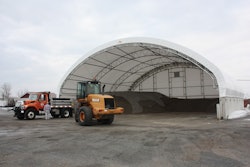New York State Department of Transportation (NYSDOT) Commissioner Joan McDonald announced the receipt of the 2012 Transportation Planning Excellence Award for outstanding work on the project to replace the Lake Champlain Bridge spanning the lake to connect Crown Point, New York, and Addison, Vermont. The honor was bestowed jointly to New York and Vermont for the project, which was funded by both states and managed by NYSDOT.
“The building of the new Lake Champlain Bridge was a historic process, one that illustrates government successfully pulling together in an innovative and efficient way to move an important safety project along quickly and to restore a critical transportation link between states,” Commissioner McDonald said. “The fact that the Lake Champlain Bridge project was one of only eight awardees to be recognized for outstanding transportation planning shows that this project is unique not only to the communities it serves, but stands out as a national model of excellence. I thank Governor Cuomo and our partners in Vermont and the federal government for helping make this project happen.”
The new Lake Champlain Bridge is a steel structure with an arch along the center span. Key bridge components are designed to be easily replaceable to reduce maintenance costs. Travel lanes are 11 feet wide, with five-foot shoulders that help accommodate larger trucks and farm vehicles, as well as provide ample room for bicyclists. Sidewalks are featured on both sides of the bridge.
The new bridge was built at the same location as the previous structure to minimize historic and environmental impacts on the surrounding area. The land adjacent to the bridge on both sides of the lake is historically sensitive, with Native American, French and Indian War and Revolutionary War artifacts buried deep along the shores of Lake Champlain. The ruins of 18th century forts – the French Fort St. Frederic and British Crown Point – sit on the New York side of the bridge. A program to commemorate the historic former bridge is now under way.
Before construction, extensive public meetings were held to help determine what the community wanted from a new bridge, where to best locate the new bridge and what type of bridge should be built.
Construction began in June 2010 after the old structure was demolished in December 2009. New York and Vermont worked closely with the United States Department of Transportation and other federal and state agencies. Together, they efficiently led a replacement project through significant review processes and necessary oversights required to guarantee that a safe new structure could be delivered to the community in record time. Overall, a project that was initially expected to be completed by 2017 was finished in late 2011.
The bridge provides a vital link between the states, with residents relying on it to get to employment and medical care, farmers relying on it to access crops, and many small businesses relying on it to carry residents and visitors for shopping and dining opportunities. Without the bridge, the detour was approximately 80 miles long and took about two hours to travel.









